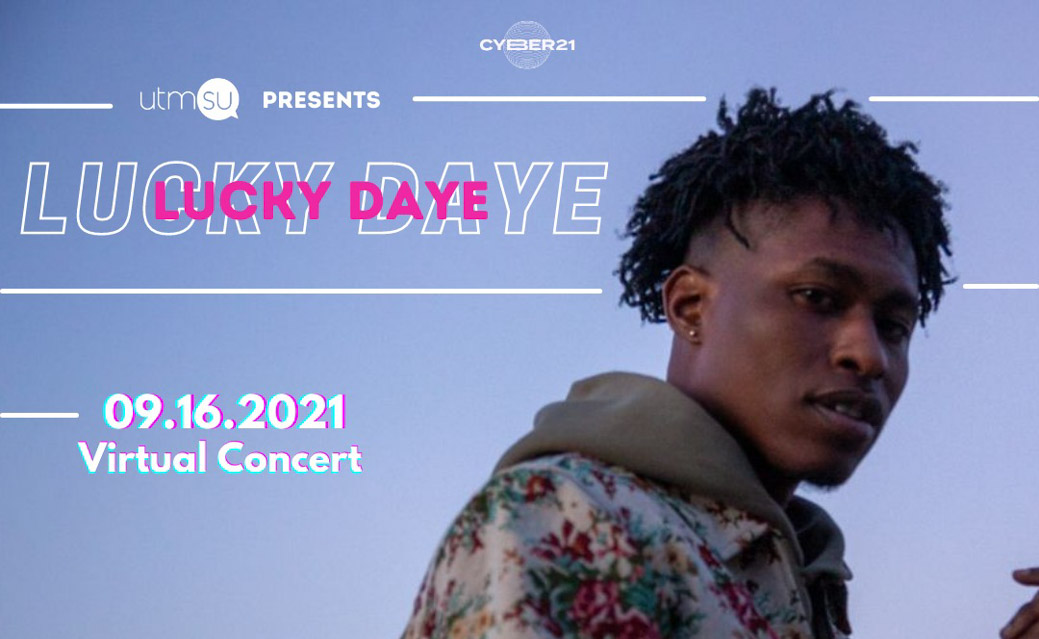Lucky Daye’s virtual concert pales in comparison to a live performance
Despite a musician’s talent, an online set-up proves to be a challenge in gaining audience attention.
There comes a point at every good concert where your head starts to go light, and you almost lose track of your feet. You are right on the edge. And it is good. Undeniably good. At their highest virtue, concerts have a safe status in the plethora of ways to have a good time.
The live concert experience can be difficult to replicate in an online livestream format. UTMSU’s SaugaFest presented Lucky Daye—a rising R&B artist whose 2019 album, Painted, garnered Grammy Award nominations—in a virtual concert on September 16. Despite how fleetingly euphoric or technically impressive a virtual concert may be, it can feel so far from the communal moment it tries to emulate.
The music was, for the most part, satisfactory. If you find Lucky Daye’s brand of trap-conscious pop-soul appealing, his songs hit the spot. The second track Lucky Daye performed, “Karma,” was marked by a descending baseline and woozy vocal melodies. The introduction to his hit single, “Roll Some Mo’,” was laced with ethereal guitar notes and trebles. “Real Games” was anchored by raining drums and triumphant horns. Lucky Daye’s sound is sweet, lavish, and exciting.
The penultimate track, “Love You Too Much,” dealt with a soundscape steeped in melancholy. Its dragging beat and reaching vocals almost sound whiny. During the concert, Lucky Daye was personable. There were a few moments when the camera came right up to the side of his face, so that blazing, golden light in the background filled any empty space in the frame—a frame which had been filled by relatively generic images of the performers accompanied by romantic hues of blue and royal purple. Singing out pleas to a distant lover beneath a shining sun, Lucky Daye looked like he was somewhere else entirely.
Should you give virtual concerts a shot? Not many people did this time around. The whole time Lucky Daye performed, the number of people on the YouTube stream never flipped above 55. Lucky Daye came on around 10:45 p.m. and left about 33 minutes later. For an event marketed from 7 p.m. to 12 a.m., a significant number of viewers may have been scared off.
Despite its musical proficiency, the concert was rather drab. Even through a Marshall speaker, Lucky Daye sounded conspicuously quiet throughout, and that shaky sound set-up extended to the band. The guitars were funky, swooning, and electric, but they always sounded distant. The drums certainly came through, but many times, at the expense of everything else.
However, going virtual is not a death wish. The digital realm can have its advantages. Live chats—which were missing from Daye’s concert—can create an instantaneous microculture, even if they may not always be the most mature or insightful spaces, and inventive cinematography can tell a story. A live performance is often valued because it only happens once, but even then, it can still be captured online.
If a bit more effort had been put into promotion and preparation, perhaps on both Lucky Daye’s and the UTMSU’s sides, this event could have pulled off something special. Instead, the concert faltered below the line just enough to expect a small crowd on a Thursday night. It felt a bit less like a synchronous event and a bit more like a watery, aesthetically generic Tiny Desk Concert.
Solution? Aim for better audio and visual quality on streams, more platforms to share the experience, and a smoother layout.
At the end, Lucky Daye looked the camera in the eye and said, “I can’t wait to be in front of y’all face to face, but right now, this is the best we can get.”
The concert was good, Lucky Daye. But the best? I think even on a virtual platform, there are ways to do better.

